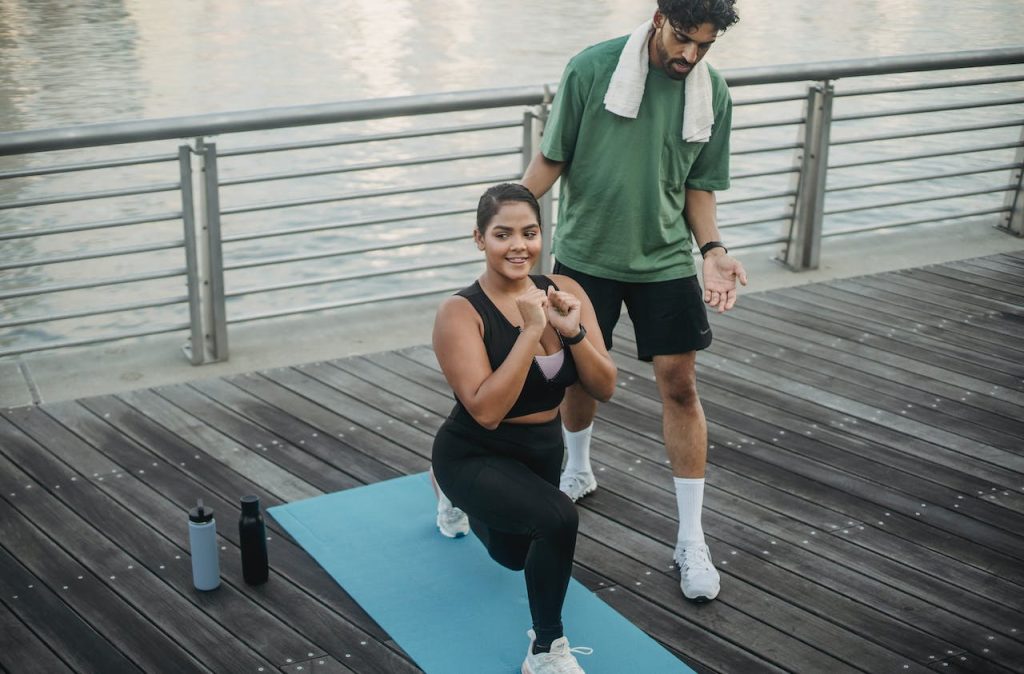Broad shoulders… big chest… gigantic biceps… All very nice, but it looks rather bare if you don’t have a foundation. I’m not talking about your quadriceps or hamstrings, or other leg muscles but even lower than that: calf exercises for big calves!
Check the following link for all calf exercises
Training Calves
You don’t see many people seriously training their calves, and it’s actually quite logical. If you were born with big calves, calf training is almost unnecessary (yes, we hate those kinds of people…). However, if you don’t have those big calves, calf training can be very annoying, especially because the results come so terribly slowly.
Then add the pain that calf exercises give you, and most athletes will quickly do a few simple sets of calf raises, and that’s all, folks!
That’s a shame because poor calves take away from the whole effect of your muscular appearance. I’ve seen quite a few bodybuilding competitions, and besides the back, calves are usually the worst-developed muscles in the participants. That’s going to cost you points anyway because your development is not balanced.
Unfortunately, I wasn’t born with big calves either, and my height only makes it more difficult to develop impressive calves. However, that’s no reason to give up! If you do nothing, nothing will come.
Calf training mainly comes down to perseverance!
My strategy boils down to the following points:
- Heavy weights
- Form
- Variation
- Perseverance
How to Get Big Calves
Let’s start with the basics: you don’t get big calves from light sets. Your calves need a lot of weight to develop. I see big men training their calves with seventy kilograms – maximum – on a standing calf machine… those are not weights that will develop big calves. Your calves are used to lifting your body weight, and they don’t get any bigger from that either. You have to give them a good beating to make them grow!
The right form is also important. Often you see people moving their feet only a centimeter or two on a machine, or they bend their legs and lift the weight by straightening their knees.
The correct execution for calf raises is as follows:
- Straighten your legs, but don’t lock your knees. So keep your legs slightly bent so that there is not too much pressure on the knees, and maintain that position
- Lower your heels as low as possible so that your calves are fully stretched
- When you come up on the balls of your feet, roll your foot towards your big toe. This ensures the best possible contraction of your calf muscles. Come all the way up until it can’t go any further
- Do not move your legs further, but let your calves do the work. So no ‘hop’ to get up. Rather use a little less weight, and make sure someone can help you maintain that form during your set
- Perform the exercise slowly!
Furthermore, I advocate variation in exercises and their execution. Your calves need to be surprised every time. This can be a slightly different way of standing, but also completely different exercises.
Oh yes, please forget the foot positions recommended by Schwarzenegger! If you position your feet differently than the natural position, you’ll get friction in your joints.
If you want to emphasize a certain part of your calves, experiment with wider and narrower stances. If you place your feet further apart, you emphasize the inside of your calf muscles. If, on the other hand, you place them closer together, you emphasize the outside of your calf muscles.
For a complete development of your calf muscles, you also need exercises where your legs are bent ninety degrees. Your calves consist of two muscles on top of each other: the gastrocnemius (the large calf muscles you see) and the soleus underneath.
When your legs are straight during a calf exercise, mainly the gastrocnemius muscles are trained. To train your soleus muscles more directly, your legs should be bent. Seated calf raises are perfect for this.
Furthermore, it’s a matter of perseverance! Your calves are – for most people – the slowest developing muscles, but they will grow if you keep working on them!
However, don’t train your calves every day because your calves can also be overtrained. Two workouts per week are sufficient.
What are the best calf exercises?
That’s a difficult question because your calves respond to everything. The standard exercises are the standing calf raise and the seated calf raise, respectively for the gastrocnemius and the soleus.
However, there are even more exercises to feast on. I’ll briefly discuss a few:
Leg Press Toe Presses
Actually, this is a kind of inverted standing calf raise. You sit on the leg press and push the weight away with your toes. Make sure you can stretch your calves well, but be careful that your feet don’t slip away!
One-Leg Calf Raises
This is a more difficult exercise than it seems. Stand on a elevation with one foot and hold onto something to maintain your balance. Now do calf raises with that one leg.
To make it harder, you can hold a dumbbell in your hand.
Donkey Raises
Donkey Raises are not often performed in the gym. Probably because it looks rather strange… There are machines for this, but they are not very common.
The principle is simple: place your feet on an elevation and lean forward on a bench or machine. Now have someone sit on your back, as far above your buttocks as possible. The execution is the same as the normal calf raises.
So these are five different good exercises to work your calves. Don’t wait any longer, and train your calves until they give up and grow!!!

